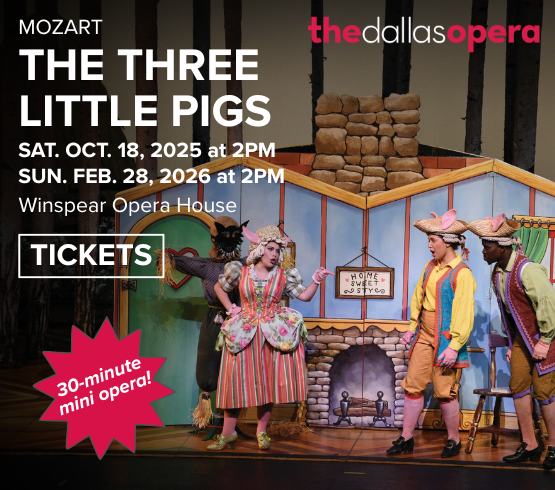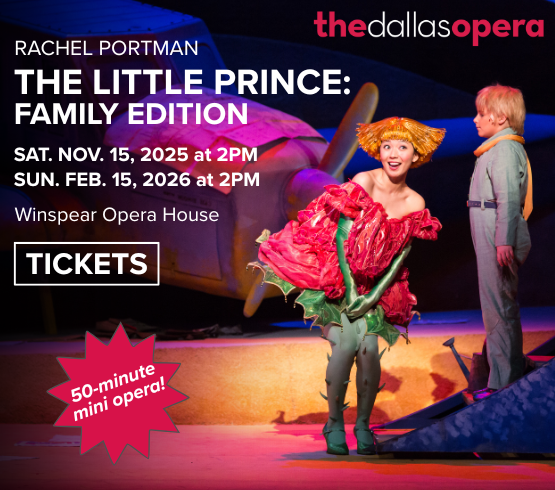I moved to Dallas in October 2009, the same month and year that the AT&T Performing Arts Center opened. The city was buzzing, I remember, so incredibly proud and excited to finally welcome people to the ruby-red Winspear Opera House, along with the outdoor Annette Strauss Square, strikingly silver Wyly Theatre, and Sammons Park, home of many open-air performances and the famous reflecting pond. ATTPAC completed (at the time) the Dallas Arts District, which at 118 acres is the largest contiguous urban arts district in America. It also boasts more buildings designed by Pritzker Prize-winning architects than any location in the world.
“I feel the same about the Arts District ranking number one in the nation,” says executive director Lily Cabatu Weiss, who has been at its helm since 2016. “A panel of travel experts nominates the top 20 arts destinations in the country and the competition begins as the arts community nationwide begins voting. For the past three years—2021, 2022, and 2023—Dallas Arts District ranked third. You can only imagine how excited and humbled I was when I realized we ranked first for 2024.”
The Dallas Arts District has been striving toward its current success since the 1970s, when a series of consultants advised unifying the city’s major arts institutions into one easily traversable downtown area. The Dallas Museum of Art was the first to open in the newly made district in 1984, followed over the next 20 years by the Morton H. Meyerson Symphony Center (1989), the Crow Collection of Asian Art in the existing Trammell Crow Center (1998), the Nasher Sculpture Center (2003), and the Booker T. Washington High School for the Performing and Visual Arts, which opened a new addition in 2008. Following ATTPAC were Moody Performance Hall (formerly Dallas City Performance Hall), Klyde Warren Park, and The Perot Museum of Nature and Science in 2012.
In April, I spent a very pleasant evening wandering the Changing Perspectives Block Party, held in honor of Dallas Arts Month (another is produced in June for Pride). Families, couples, and friends of all ages and backgrounds did indeed turn out for performances from Bruce Wood Dance, Tejano music artist Monica Saldivar and her band, Afro-Caribbean-influenced singer/songwriter Kamica King, Indigenous ACE, Dezi 5, and the rhythmic talents of both Percussive Things and St. Philip’s School & Community Center Percussion Ensemble. People took turns adding their mark to Ebony Lewis’ community mural before splaying out below the Wyly Theater, where, high above, the fearless dancers of BANDALOOP floated and spun like delicate magenta spiders caught in a breeze.

1 ⁄8
Birdman by Close-Act Theater performing at the 2024 Dallas Arts District Changing Perspectives Block Party. Photo by Mike Brooks.

2 ⁄8
Dezi 5 Performing at the 2024 Dallas Arts District Changing Perspectives Block Party. Photo by Mike Brooks.

3 ⁄8
Community Mural Painting at the 2024 Dallas Arts District Changing Perspectives Block Party. Photo by Mike Brooks.

4 ⁄8
Wyly Theatre; Photo courtesy of the Dallas Arts District.

5 ⁄8
Dallas Museum of Art; Photo courtesy of the DMA.

6 ⁄8

7 ⁄8

8 ⁄8
Dallas Arts District Executive Director Lily Cabatu Weiss with Brooklyn Jumbies and Dallas Arts District staff. Photo courtesy of the Dallas Arts District.
And the nonprofit isn’t done yet. Recent public realm improvements at Routh Street Gateway create a more pedestrian-friendly passageway between the Dallas Arts District and Uptown. The addition of HALL Arts Hotel and Residences and JW Marriott-Dallas Arts District encourage longer stays from out-of-towners. A $1 million bond from 2017 has been matched by the city to upgrade signalization systems at the intersections of Pearl and Flora and Pearl and Ross. More parking, wider medians, and fewer lanes to calm traffic are all on the horizon.
“Americans for the Arts completed the Arts and Economic Impact Study 6 for the fiscal year 2022 and the results still proved that the arts are an economic driver in the City of Dallas, yielding an overall impact of $853.6 million, with total tax revenue of $168.5,” says Weiss. “Fifteen organizations from the Arts District yielded $340.7 in economic impact and $62 million in total tax revenue.”
“More communities have reached out to find out more about our organization, as they begin to develop new cultural districts and improve existing cultural districts: the Music Center in Los Angeles, Uptown Jedda in Saudi Arabia, and Detroit, among others,” says Weiss. “Dallas is the ninth-largest city in the nation. It is also a city with incredible professional sports teams—and the reigning World Series champions— so it is equally as impressive to rank the #1 arts district in the nation. To hear each of the city council members at various events announce this #1 ranking reminds me of how many communities and individuals collaborate with and support the Dallas Arts District, unifying culture and commerce.”
—LINDSEY WILSON





